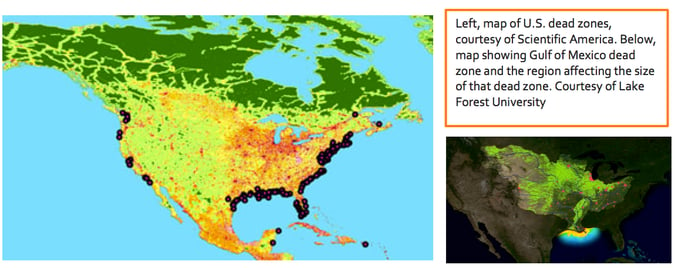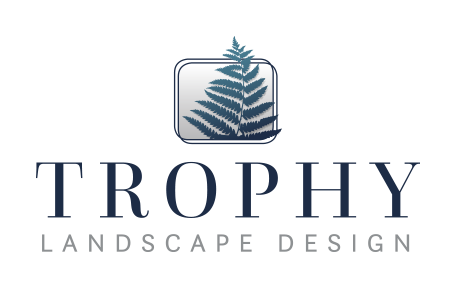Dead zones, also known as Hypoxia, occur when there isn’t enough oxygen to support most marine life. When nitrogen and phosphorus run off into our water systems, algae bloom growth increases, robbing the water of oxygen. A big source of nitrogen and phosphorus run off is the use of fertilizers, whose main components are nitrogen and phosphorus.

How do they occur?
Nitrogen and phosphorus are washed into our streams, lakes, bays and oceans, promoting the growth of phytoplankton blooms, and in turn zooplankton (which feed off of phytoplankton). When phytoplankton and zooplankton waste decomposes, oxygen is used faster than can be replaced, leading to the formation of dead zones. According to NOAA, “Dead zones are biological desserts.”
Dead zones can form naturally, but human activity can play a role, contributing to the growth and severity of dead zones.
Where do they occur?
The Virginia Institute of Marine Scientists estimate that over 400 dead zones exist worldwide. The second largest dead zone is located in the Gulf of Mexico covering 7,500 – 8,500 square miles. While size fluctuates throughout the year; it has doubled in size since the 1980’s. Other U.S. dead zones are located in the Chesapeake Bay, the Great Lakes and areas along the east and west coast of the USA. According to the NCCOS, “over half of the U.S. estuaries now experience natural or harm-induced hypoxia conditions at some time each year and evidence suggests that the frequency and duration of dead zones have increase over the last few decades.”
What does this mean?
Marine organisms occupying areas where dead zones occur are at risk, affecting their physiological stress, growth, reproduction and survival. For those marine organisms that cannot escape, dead zones are deadly. Dead zones can have a drastic effect on commercial and recreational fisheries. According to NOAA, “based on experiences in other coastal and marine systems, worsening hypoxic conditions could lead to a serious decline of ecologically and commercially important species.”
What can you do to help?
If you’re a homeowner, you can be part of the dead zone solution by being careful which products you or your lawn care service utilize to maintain the health of your lawn. By choosing to incorporate organic practices into your lawn care maintenance ritual or by purchasing lawn care services from companies using organic products, you can help limit the amount of nitrogen and phosphorus that run into our local waterways. Thanks for doing your part!
Resources
http://www.scientificamerican.com/media/inline/2008-08-15_bigMap.jpg
http://www.noaa.gov/factsheets/new%20version/dead_zones.pdf
http://oceanservice.noaa.gov/facts/deadzone.html
http://www.cop.noaa.gov/stressors/pollution/
http://www.vims.edu/research/topics/dead_zones/
